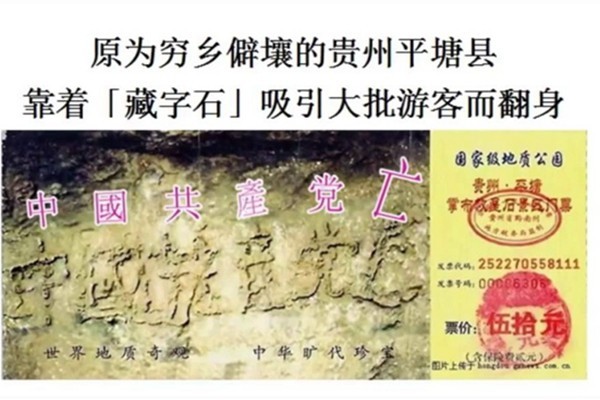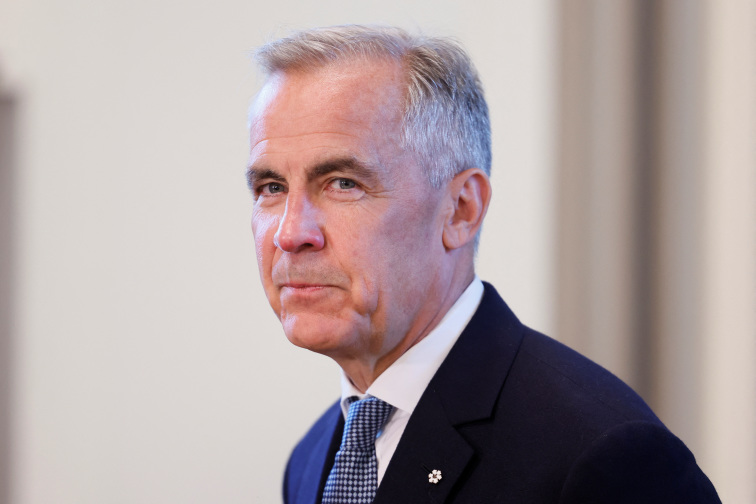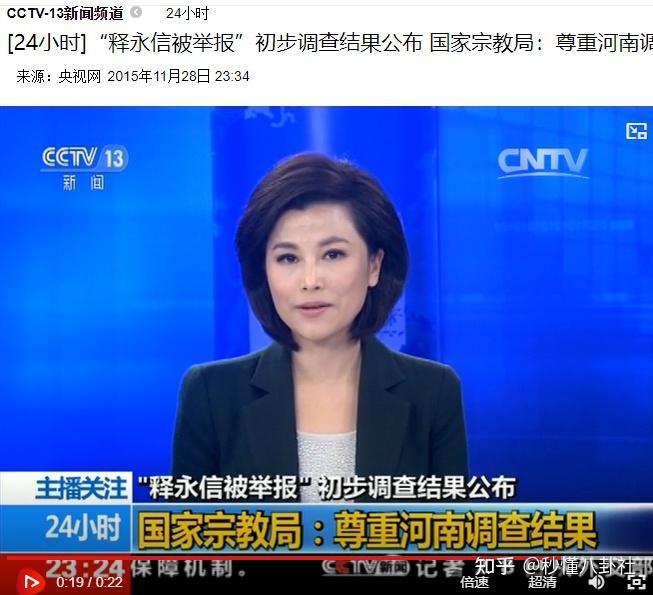A cross-section of a stone reveals the six large characters: The Chinese Communist Party is doomed. (Video screenshot)
[People News] On July 28, the Buddhist Association of China issued a public statement agreeing to revoke Shi Yongxin’s ordination certificate. Just a day earlier, at 8:16 p.m. on July 27, a notice from the Shaolin Temple Management Office shocked the nation: Shi Yongxin, the abbot of Shaolin Temple, is under investigation for suspected criminal activities and serious violations of Buddhist precepts. Multiple government departments are now conducting a joint investigation. Thus fell the flamboyant monk Shi Yongxin, who had presided over Shaolin Temple for 38 years—despite being surrounded by controversy and public allegations for much of his tenure. This leaves many wondering: Who protected him all these years? Which powerful figure stood behind him?
The Buddhist Association of China's July 28 notice first referenced the Shaolin Temple’s announcement from the 27th, then stated: “Shi Yongxin’s actions are extremely egregious, have severely damaged the reputation of the Buddhist community, and tarnished the image of monks. The Buddhist Association of China firmly supports the legal handling of Shi Yongxin. We have recently received a report from the Henan Buddhist Association regarding the revocation of Shi Yongxin’s ordination certificate. According to relevant regulations, we agree to revoke the ordination of Shi Yongxin (secular name: Liu Yingcheng).”
After the Buddhist Association’s statement, netizens erupted in heated discussion:
“Where was the Buddhist Association ten years ago when people were already reporting him? Why are they only speaking up now that he’s been exposed?”
“Now that something’s happened, they’re just trying to pass the buck. The Association can’t escape blame for ignoring those old reports.”
“They’ve known what Shi Yongxin was up to for years. Why stay silent back then?”
“With such a big scandal at Shaolin Temple, did the supervising authorities really not notice a single clue all these years?”
“Everyone knew this monk had issues for over a decade, but the so-called investigation team back then claimed he was clean!”
“Public outrage has reached a boiling point. They can’t cover it up anymore. You think the Association is clean? Start digging—it’s all grey.”
“Shi Yongxin isn’t the only one. There are a whole bunch of abbots in robes. Don’t tell me the Association doesn’t know?”
“Shi Yongxin wasn’t fighting alone! He spent decades embedding himself in the Buddhist world. A full investigation is needed—root out all the rot he left behind.”
“Who gave him the position of vice president of the Buddhist Association? This isn’t something a single decision can fix. We need to dig deeper into the chaos within religious affairs.”
“If just one Shi Yongxin can hold such sway, imagine how many more like him haven’t been uncovered in other departments. This is just the beginning—get ready for more.”
Many asked: Why was Shi Yongxin able to operate with impunity for so many years? Even with multiple whistleblowers, why did investigations always clear him? People are calling for investigations not just into him, but also into those who protected him and covered up the truth—a scandal seen by some as the most damaging to Chinese Buddhism in a century.
Shi Yongxin’s history of being reported runs nearly parallel with his reign as abbot. His character and misdeeds were never truly a secret—his reputation was long sullied. His downfall itself isn’t the main issue; the real question is: Why only now?
Back in 2015, also on July 25, someone claiming to be a former Shaolin disciple, Shi Zhengyi, posted an article online titled “Who Will Supervise Shi Yongxin, the Big Tiger of Shaolin Temple?” He even included a phone number, alleging Shi Yongxin had two separate IDs and hukou registrations, along with a list of ID numbers. He also claimed the monk had mistresses and had engaged in extramarital affairs.
The next day, Shaolin Temple reported the matter to the police and publicly posted the case materials, demanding that “the authorities deal with the rumour-mongers according to law.”
In August 2015, whistleblowers like Shi Yanlu even reported Shi Yongxin directly to China’s Supreme People’s Procuratorate. But after months of investigation, the authorities in Henan cleared Shi Yongxin, declaring him “pure and innocent.”
As for the economic misconduct mentioned in the original report, the investigators claimed to still be “handling it according to laws and regulations.” It wasn’t until 2017, two years later, that they officially concluded that the economic issues were either “untrue” or lacked evidence, with only minor internal management improvements needed.
Shi Yongxin came through unscathed. Whistleblower Shi Yanlu quietly left the spotlight.
On August 11, 2015, a media outlet asked bluntly: Why did all the noise around Shi Yongxin result in so little action?
The article offered this insight: Shi Yongxin had built a massive network, and his “protection” was not just one powerful individual—it was an entire, highly coordinated system of mutual benefit. He had deep connections across both political and business circles.
The article noted: In religious circles, Shi Yongxin held the post of Vice President of the Buddhist Association of China. Investigating him meant risking the reputation of the entire religious administrative structure. His commercial empire was his strongest shield—capital was his most loyal ally.
For over a decade, no amount of whistleblowing could bring him down. That’s because taking him down would mean shaking an entire web of shared interests. His “umbrella of protection” was essentially a mutual benefit alliance—local governments needed a tourist attraction, businesses wanted cultural branding, and believers sought spiritual comfort. In this equation, Shi Yongxin was the irreplaceable linchpin.
A commentary signed “Common Sense” identified three main reasons for Shi Yongxin’s long-standing impunity:
-
Shaolin Temple used its religious identity as a shield, building itself into an independent “kingdom” that was hard for outsiders to supervise.
-
Shi Yongxin colluded with local officials in Dengfeng, Henan, and even with figures in the national religious bureaucracy, forming a tightly-knit alliance of shared interests.
-
Shi Yongxin was bold and cunning, publicly shaping a narrative that framed him as a victim resisting government interference in a “sacred religious site,” which confused many people’s judgments.
One netizen summarised the issue with biting clarity: “If the leaders say he has a problem, then even if he doesn’t, he does. If they say he doesn’t have a problem, then even if he does, he doesn’t. In China, things aren’t easily explained—in one word: chaos.” △










News magazine bootstrap themes!
I like this themes, fast loading and look profesional
Thank you Carlos!
You're welcome!
Please support me with give positive rating!
Yes Sure!